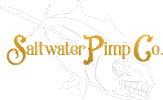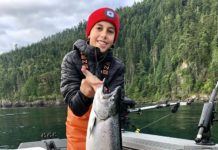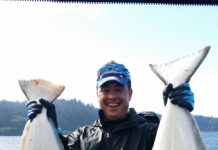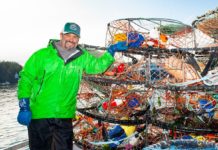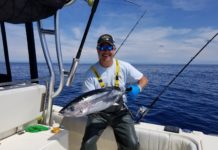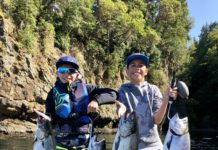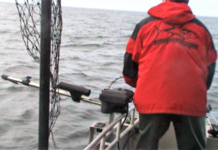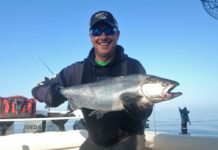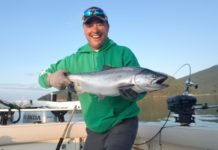
Pelagic brown algae in the genus Sargassum. The berry-like structures are gas-filled bladders known as pneumatocysts, which provide buoyancy to the plant. Image courtesy of H. Scott Meister, SCDNR.
Did You Know?
In 2005, scientists in the Gulf of Mexico used a type of net called a neuston net to sample surface waters. In towing the net for just one 15-minute period within Sargassum habitat, they collected over 3,000 fish in 82 kilograms (180 pounds) of Sargassum!
By collecting samples throughout the water column (surface, middle, and bottom), scientists were trying to understand how communities at different water depths are connected.
Sargassum is abundant in the ocean. Upon close inspection, it is easy to see the many leafy appendages, branches, and round, berry-like structures that make up the plant. These “berries” are actually gas-filled structures, called pneumatocysts, which are filled mostly with oxygen. Pneumatocysts add buoyancy to the plant structure and allow it to float on the surface.
Floating rafts of Sargassum can stretch for miles across the ocean. This floating habitat provides food, refuge, and breeding grounds for an array of critters such as fishes, sea turtles, marine birds, crabs, shrimp, and more. Some animals, like the Sargassum fish (in the frogfish family), live their whole lives only in this habitat. Sargassum serves as a primary nursery area for a variety of commercially important fishes such as mahi mahi, jacks, and amberjacks.
When Sargassum loses its buoyancy, it sinks to the seafloor, providing energy in the form of carbon to fishes and invertebrates in the deep sea. Sargassum may also provide an important addition to the food sources available in the deep sea.
Because of its ecological importance, Sargassum has been designated as Essential Fish Habitat, which affords these areas special protection. However, Sargassum habitat has been poorly studied because it is so difficult to sample. Further research is needed to understand, protect, and best conserve this natural resource.
For More Information:
Sargassum: A Complex ‘Island’ Community at Sea : Life on the Edge 2003
Sampling the Sargassum Community: Dip Nets and Green-Light Lures : Estuary to the Abyss 2004
Surface to Bottom: A Connected World : Life on the Edge 2005
The Sea With No Shores (pdf, 277 kb)
Sign up for the Ocean Explorer Email Update List.
